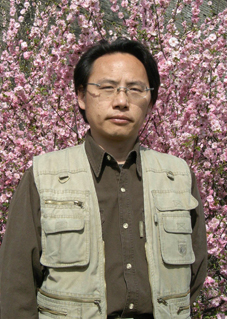People
Li Xing-ming
Li Xing-ming

Professor, Vice-Director
Ph.D. Southeast University, Nanjing; M.A. Xi’an Academy of Fine Arts; B.A. Shanxi Normal University, Xi’an; Completed post-doctoral programs in the School of Archeology and Museology at Peking University, formerly professor of Xi’an Academy of Fine Arts, and currently professor of the National Institute for Advanced Humanistic Studies at Fudan University. Teaching and research interests are the history of Chinese art and the archaeological study of medieval Chinese funeral art. Published books include: A Study of Tang Tomb Murals (Xi’an: Shanxi People’s Fine Arts Publishing House, 2005) and Corpora of Chinese Tomb Sculpture, Vol. 4, the Western and Eastern Jin, and Southern and Northern Dynasties (Co-editor, Xi’an: Shanxi People’s Fine Arts Publishing House, 2007).
For more than ten years, I have worked on medieval Chinese funerary art, especially Tang murals, and have made an attempt to interpret the concepts of funerary rites, social and political functions, thoughts and beliefs, and artistic style of Tang tomb murals, with the methods of archaeology, intellectual history and art history.
More recently, I have focused on the tomb figurines of the Sui and Tang periods. Since the identity between tomb figurines and tomb murals bases on the ancient idea of “taking the dead to be alive”, both of them are the imitation of real life as well as the elements constructing the scene of imaginary nether world in which the tomb occupant was expected to be alive. Therefore, they represent the popular concept of nether world, and also reveal the information concerned with folkways and common beliefs. Making a study on the relationship between tomb figurines and tomb murals will help the further comprehensive study of funerary art. In addition, I pay attention to the Buddhist culture factors in medieval Chinese funerary art, and try to probe into the details of the situation in which Chinese funerary art received Indian Buddhist culture.
The huge number of excavated images and objects from the historical contexts in ancient China imply a lot of cultural information that cannot be interpreted completely by the methods of traditional art history. Thus it is necessary for us to find new methods for interpreting these visual materials, with knowledge of the characteristics of Chinese civilization and with penetrating insight into the relationship between historical documents and excavated images or objects.